- Minister's Foreword
- Introduction
- Part 1. Strategic Environment
- Part 2. National Defense Policy
- Chapter 3. National Defense Policy Plans
- Chapter 4. National Defense Policy Implementation
- Section 1. Enhance Force Buildup Efforts
- Section 2. Devise Well-planned Transformation of Military Service
- Section 3. Reform to National Defense Legal System
- Section 4. Safeguard Military Human Rights
- Section 5. Expand Military Exchanges
- Section 6. Enhance Crisis Response
- Section 7. Improve Care for Service Members
- Section 8. Promote Gender Equality
- Part 3. National Defense Capabilities
- Chapter 5. National Defense Force
- Section 1. Introducing the National Defense Organization
- Section 2. Improving Joint Operations Effectiveness
- Section 3. Maintaining Continuous Operational and Training Readiness
- Section 4. Consolidating Information and Electronic Warfare Capabilities
- Section 5. Refining Logistics Support
- Section 6. Consolidating Reserve Force
- Section 7. Forging Intangible Combat Capabilities
- Chapter 6. National Defense Resources
- Chapter 5. National Defense Force
- Part 4. All-out Defense
- Appendixes
To carry out public services and provide care for military families, the ROC Armed Forces have been pushing forward various civil services, reconstruction of military families' villages, dependent services, preservation of dependents' village culture, and the protection of the rights of the service members. It is hoped that through these measures, we may establish a well structured military-civilian interaction platform to pave a smooth way for promoting the volunteer force.
I. Civil Services
( I ) Implementing Coordination Mechanisms and Providing Active Support
According to the features of different region, the headquarters of each theater of operations shall serve as the combined coordination unit for coordinating local civil affairs in its area of responsibility (AOR), and assign subordinate forces of combined arms brigades (CAB) or above to host the Civilian Affairs Coordination Meeting around the time of our three major festivals (Chinese New Year, Dragon Boat Festival, and Mid-Autumn Festival), and invite local government officials, public representatives, local prominent figures, and civil
establishments to attend the meeting. From 2014 to August 2015, 153 meetings have been held to fully exchange opinions so as to maximize the functions of the coordination mechanism.
( II ) Improving Military-Civilian Interaction and Earning People's Support
To carry out the President's policies on communication with the people and promotion of the volunteer force, the MND has been doing Leaders Go to Grassroots programs from 2012. The program is divided into 3 special events: Military Musical Education and Promotion of the Volunteer Force, All-out Defense Educational Tours - Open House Event and Active Promotion of All-out Defense and the Volunteer Force. In 2014, a total of 11 events were held with more than 280,000 participants (per Appendix 8-2). These programs
and initiatives have proved to be positive in enhancing military-civilian relationships and promoting the policy of all-out defense and the volunteer force.
( III ) Establishing Service Windows in Compliance with the National Policies
The headquarters of the Army's Central Corps and Southern Corps, Huadong Defense Command, and Armed Forces Reserve Command in Central Taiwan have integrated the Army, Air Force, and Navy forces in their AORs to form National Defense Service Sections at Executive Yuan's joint service centers located in Taichung, Chiayi, Kaohsiung and Hualien respectively. Personnel are assigned to these Service Sections by rotation on a long-term basis to provide the public with consultation, services, and counseling on matters of national
defense. From 2014 to August 2015, these sections have handled 550 public complaints, inquiries, and letters all with substantive responses.
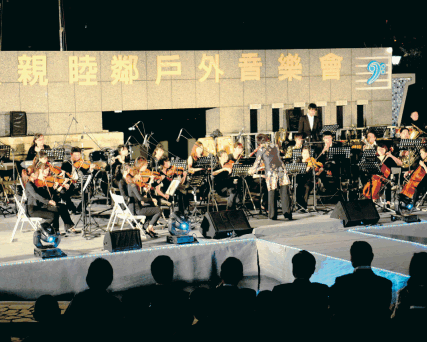
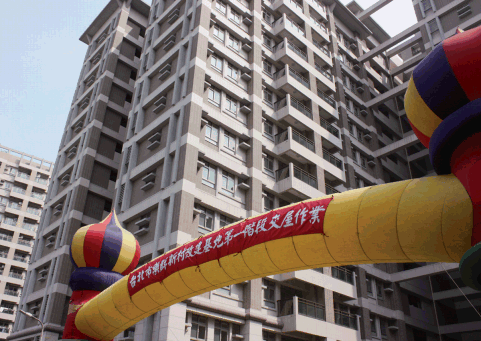
1.To carry out the polices on communication with the people and promotion of the volunteer force, the MND has been doing Leaders Go to Grassroots programs, and hosting events, such as Military Musical Education and Promotion of the Volunteer Force to strengthen the military -civilian relationships so as to reach a consensus in between.
2.The ROC Armed Forces are committed to the reconstruction and renovation of military dependents' villages to provide better care to families of the service members.
3.The MND has been working with the VAC to provide care for single veterans. Veterans' quarters are provided with counseling offices with contact personnel in order to ensure that they will be able to receive adequate care.
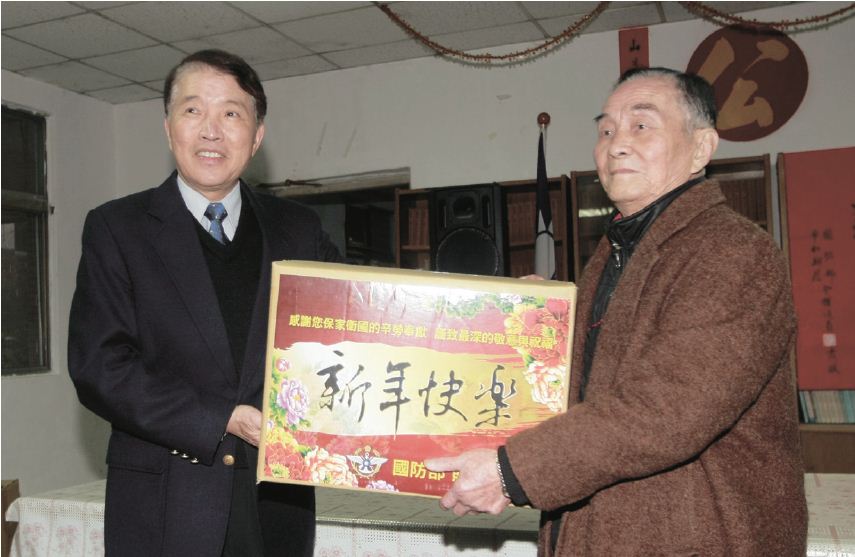
( IV ) Friendly Care for Senior Citizens and Single Veterans
In response to the Ministry of the Interior's Friendly Care Program for Senior Citizens, we have been working with the VAC to provide care for single veterans (a total of 1,255 individuals). We have assigned contact personnel to station in counseling offices at 41 veterans' quarters in order to provide adequate care for them.
( V ) Mitigating Transport Overload for Home comers
In the event that a large number of travelers are left stranded in offshore (remote) islands as a result of transport overload in adverse weather or during festivals, the ROC Armed Forces, sensing the suffering of the people in need, shall coordinate the Ministry of Transportation and Communications to carry out emergency transport missions. In 2014, the ROC Armed Forces assigned 46 sorties of C-130 to help transport 1,585 individuals and chartered 1 civilian vessel to help evacuate 386 individuals. From January to August 2015, a total of 66 sorties were assigned to transport 2,722 individuals so as to help people to return home on time and demonstrate the ROC Armed Forces' tradition to help people in need.
(VI) Supporting Produce Marketing and Securing Farmer’s Profits
At peak time of harvest, the MND will work with the Council of Agriculture of the Executive Yuan to promote multiple choices of vegetables and fruits through the ROC Armed Forces supply chain of food material to ensure balanced nutrition for service members. From 2014 to August 2015, the ROC Armed Forces have purchased a total of 9,381 tons of 18 different farm produce, including sweet potatoes and oranges, helping to mitigate supply-demand imbalance and ensure profitability for our fellow farmers.
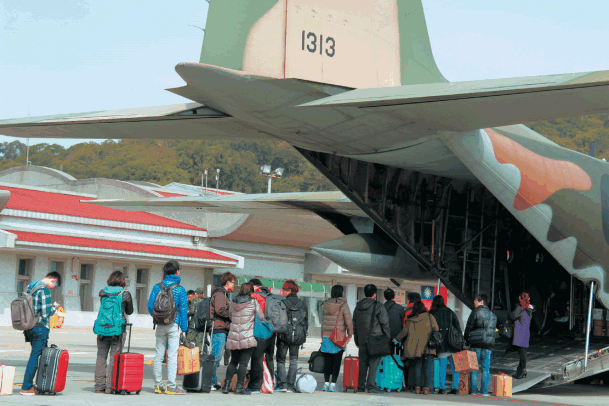
In order to demonstrate the ROC Armed Forces' tradition to help the people in need, we have been working with the Ministry of Transportation and Communications to carry out emergency transport missions to and from offshore (remote) islands, by assigning transport sorties and chartering merchant vessels to support our transport efforts.
( VII ) Providing Care for Service Members in Need and Gaining Support from Dependents
The Friends of Armed Forces Association has been giving out consolation allowances to service members and dependents whose families are suffering from mishaps or serious accidents. In 2014, the association offered NT$ 4.16 million consolation allowances to 845 households of service members. In 2015 to date, NT$ 1.174 million was offered to 332 households. These allowances
helped provide support in a timely fashion to service members and their families in need.
II. Preserving the Military Families' Village Culture
Military families' village is a settlement built to take good care of dependents and ease the anxiety of service members for their families. These villages are rich with the common experiences and history of our Armed Forces and represent an important cultural asset of our country. In accordance with the Act for Rebuilding Old Dependents' Village and Regulations Governing the Selection and Review of Old Dependents' Village of the ROC Armed Forces for Cultural Preservation, the MND has chosen Zhongxing New Village in Taipei and another 12 villages as part of the military families' village cultural preservation areas. Furthermore, we have selected additional 27 military families' villages recognized as cultural assets, through collaboration with local governments, to be revitalized or renovated with urban planning adjustments and urban renewal measures so as to preserve the cultural assets and valuable legacy, and instill a new spirit for our military families' villages (per Appendix 8-3).
III. Protecting Rights of Service Members
The MND places great importance on the human rights of the service members. Abiding by the law, we have established legal committees, appeals and petitions review committees, national compensation processing committees, and committees for the protection of service members' rights and interests, with selected members from social, academic, and professional circles in order to ensure a well rounded legal protection. We also established the ROC Armed Forces Complaint System and 1985 Consultation Helpline for service members to voice their complaints, so as to realize protection of human rights for all service members.
( I ) Complaint System
The MND has been doing introductions of complaint systems, satisfaction surveys of service members, and improving the service quality of the 1985 Consultation Helpline to improve the functions of our complaint system. In order to improve the service quality and shorten the processing time of our 1985 Consultation Helpline, we have elevated the supervision level of complaint handling to that of headquarters of an army corps, and defense commands (the Navy and the Air Force followed suit). All complaints will be categorized
and processed by corresponding service headquarters, and supervised by relevant Joint Staff in the MND. From 2014 to August 2015, we have received 21,435 phone calls of complaints and inquiries. Among them, 2,523 calls were accepted as cases for subsequent processing, and all have been handled with great care and consideration.
( II ) Pushing for Service Innovation and Improvement Programs
- According to the 2014-2015 Service Innovation and Improvement Action Plan of the MND, we have been providing seminars, education and training, performance assessment and benchmarking to improve our internal efficiency and the quality of external services at each level. Furthermore, we have streamlined our administrative processes to improve public convenience and adopted pro-active service policies to create a public service image and reputation that is professional, accessible, and efficient.
- The MND has divided its public service establishments into 2 major categories: service planning units and frontline service units, according to the properties, target, and scale of the services offered. Performance reviews (including document, website, and on-site assessments) are carried out every 6 months. Units with outstanding performance are encouraged to join the contest for Public Service Quality Award hosted by the government to help improve overall quality of our public services.
( III ) Protection of Rights
1. Policy Objectives
The MND has established the Committee on the Protection of Rights for Service Members to handle issues concerning the rights and interests of the service members and their families. Moreover, we have invited external professionals to the committee as adjudicators to review relevant cases, and made promotion efforts to show our determination to make significant inroads towards protecting the legal rights and interests of the service members. Since 2014, all 14 adjudicators have been composed
of legal experts from human rights organizations, public welfare organizations and legal circles, and they are tasked to jointly review cases associated with the individual rights and interests of service members so as to make the reviewing processes more just and transparent.
2. Actual Results
(1) Enhancing Case Reviews
To strengthen case review and legal redress mechanism and improve its efficiency, we have stipulated the Guidelines for the Establishment of the Committee on the Protection of Rights for Service Members and Reviewing Principles for the Committee on the Protection of Rights for Service Members to conduct preliminary reviews by the adjudicators so as to shorten the time frame for reviewing. Since 2014, we have received 423 cases from service members concerning the infringements on their
rights and interests. Among them, 342 cases were closed (with 64 cases revoked, 119 cases rejected, 66 cases declined, and 93 cases withdrawn by applicants (per Appendix 8-4)). The committee is holding meeting every quarter to evaluate the progress of cases of each unit so as to effectively enhance the protection efforts for the rights and interests of all the service members.
(2)Continuing Litigation Aid for Cases Arising from Actions in the Line of Duty
The MND has stipulated Regulations Governing Applications for Litigation Aid for Cases Arising from Actions in the Line of Duty to provide legal subsidies, by following the Regulations Governing Litigation Aid for Civil Servant for Performing Duties, to hire legal counsel for service members who involved in civil or criminal litigations in the line of duty. By so doing, the service members shall be more willing to take initiatives and to show their strong sense of responsibility when carrying
out their duties.
(3)Compiling Collections of Cases on the Protection of Individual Rights and Interests
From resolutions for cases of the MND, Army, Navy, Air Force and Political Warfare Bureau, reviewed and double-reviewed by the Committee on the Protection of Rights for Service Members, the MND has picked out cases of educational significance to compile into collections, published and distributed to units at all levels for their reference.
(IV) Legal Services and Litigation Counseling
1. Enhancing Legal Services
(1) From 2014 to August 2015, we have handled 687 litigation counseling cases. Legal affairs sections, legal service centers and judge advocates of brigade level or above in each service headquarters (and command) are responsible for providing various legal services, such as responding to legal inquiries, drafting legal orders, reviewing contracts, composing legal certificates and serving as a litigation agent. A total of 6,111 legal services have been provided during this time period, all with positive responses from service members and their families.
(2) In response to the transformation of our military judicial system, our judge advocates have been reassigned to units of CAB level or above to provide legal education and services, and establish statutory regulations, starting from 14 January 2014. Legal service centers in northern and southern Taiwan serve as litigation agencies for civil, administrative and non-contentious cases in which the military establishments and service members are involved. Judge advocates have also been assigned to handle litigation cases involved with military units for actions in their line of duty. From January 2014 to August 2015, our judge advocates have provided litigation services in 120 cases, and winning 15 cases among them so as to effectively protect the legal rights and interests of our service members and military units.
(3)After our military judicial system was transformed, our judge advocates from the legal service centers and various units have been assigned with 12 temporary duties to date, to set up legal consultation desk services at various camps in order to achieve practical protection of the rights and interests of the service members.
2. Promoting Human Rights Awareness
(1) From January 2014 to August 2015, we have held a total of 8,350 workshop sessions to promote awareness for the International
Covenant on Civil and Political Rights and International Covenant on Economic, Social and Cultural Rights, helping our service members to recognize the importance of rule by law and respect for human rights.
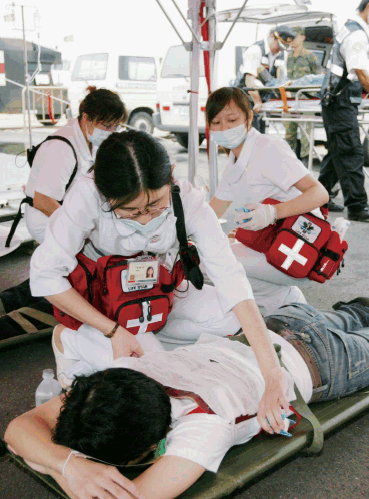
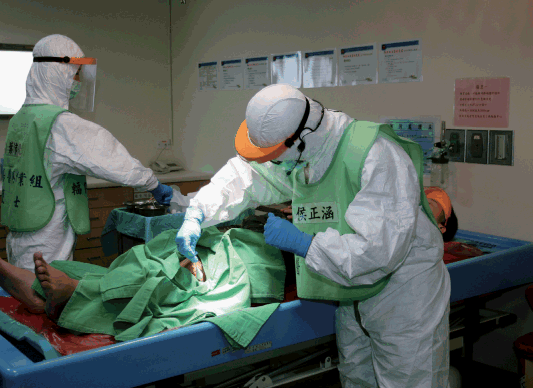
1.Armed Forces Hospitals are committed to maintaining their operational capacities in order to satisfy medical care requirements of the service members and the general public, and achieve the goals of military medical care preparedness both in peacetime and wartime.
2.Currently, the ROC Armed Forces medical care system is focused on Mass Casualty Contingent Response so as to satisfy the practical requirements of defensive operations, strengthen operational capabilities, and ensure the performance of health support missions in joint operations.
(2) We have made use of legal education sessions to promote awareness against sexual assault, sexual harassment, and domestic violence. From 2014 to August 2015, a total of 8,350 legal education courses were held for 822,600 participants.
(3) Pursuant to our national policy to join the International Human Rights Conventions, the MND, in order to realize the protection
for human rights in the military, has asked all subordinate units to examine current 113 statutory regulations, 1,771 administrative rules, and 334 administrative measures that may have associated with the United Nations Convention against Torture. The results have shown no infringements on the essence and spirit of the Convention.
3. Exerting Appeal Functions
In order to gain public credibility and exert administrative supervisory functions of the appeal and deliberation processes, the MND has requested any cases handled by its Appeals and Deliberation Committee to be resolved within 3 months. From January 2014 to August 2015, only 2 appeal cases where the MND initiated administrative litigations were revoked by the administrative court. The results have shown that the punctuality and quality of MND appeal decisions are well acknowledged by the administrative court.
IV. Medical and Health Care
( I ) Improving Medical Logistics Operations and Facilitating Combat Training and Disaster Relief Preparations
Currently, the medical logistics and support system of the ROC Armed Forces is based on a 2-stage, 3-level system (per Appendix 8-5). Following the principle of applying medical treatment in proximity and direct evacuation to rear areas, the MND is dedicated to strengthening emergency rescue capacity of medical logistics units, and improving the quality of medical evacuation and transfer. Furthermore, in order to deepen the sense of accountability for its regional medical installations, the ROC Armed Forces have asked military hospitals and medical logistic units in the same theater of operations to be fully connected, with special attention to Mass Casualty Contingent Responses, Utilizing Civilian Medical Resources and Establishing Mobilization Capacities, Strengthening Medical Logistic Units' Cross-Theater Support Capabilities, Improving Hygiene (Medical)Material Supply and Shipping Grid, and Practical
Management and Storage of Operational Hygiene (Medical) Material. With these emphases in mind, our medical logistics and support system can thus satisfy actual requirements of defensive operations and ensure successful completion of medical logistics support missions in joint operations.
In addition, the ROC Armed Forces are able to use extensive experiences gained from years of participation in disaster prevention and relief to integrate our medical logistics operations with local medical operations, and improve interactions between governmental agencies and public and private hospitals. Following the principles of Standardization of Medical Rescue Teams and
Mobilization of Rescue Equipment and Modules, we have established routine medical support capabilities for disaster relief operations so as to ensure success in emergency medical missions. In mishaps of the TransAsia Airways Flight 222 crash at Magong on 23 July 2014, Kaohsiung Gas Explosion on 31 July 2014, and the TransAsia Airways Flight 235 crash at Taipei City on 4 February 2015, and Formosa Fun Coast dust explosion at New Taipei City on 27 June 2015, the medical logistics and healthcare systems of the ROC Armed
Forces were activated at a short notice to arrive on-site to demonstrate their complete emergent medical care capabilities.
( II ) Strengthening Armed Forces Hospital Capacities and Improving Quality for Military-Civilian Medical Care
The Armed Forces Hospitals are responsible for maintaining health status of the service members, providing general medical services for the public, participating in disaster relief operations, and offering medical support against epidemics. The hospitals are also responsible for implementing physical examinations for enlisted personnel and personnel of special duties, aviation physical training, and military medical R&D for aviation and diving medicine. In wartime, the hospitals shall play a role in mobilization preparation missions,
such as commandeering (or procuring) medical facilities and supplies, and dispatching beds. Furthermore, the hospitals shall follow the government's diplomatic policies to offer humanitarian support and medical services for friendly nations. Hence, ROC Armed Forces medical resources must be used and managed in a more efficient manner to satisfy the medical service requirements of the service members as well as the general public, and accomplish various military medical missions both in peacetime and wartime.
The Armed Forces Hospitals are also constantly expanding the Armed Forces Medical Data Net and integrating decision-making support systems in response to government policies for enhancing patient safety, integrating exchanges of electronic medical histories, improving medical care quality, and meeting the requirements of hospital accreditation programs and operational management decisions. The aim of these measures is to ensure that Armed Forces Hospitals are capable of achieving the goals of medical-related job automation,
information system management and corporate-based management. The Armed Forces Hospitals uphold the principle of public services and are committed to improving medical service quality. Since 2014, our Tri-service General Hospital has won the 6th Government Service Quality Award. Kaohsiung and Taichung Armed Forces General Hospitals also received the Symbol of National Quality
for Transprofessional and Innovative Service Mechanism and patient-centered, comprehensive, and customizd services.
( III ) Integrating Military-Civilian Healthcare Systems
Through military and civilian medical cooperation, emergency operations center conferences, and monthly meetings for local specialized medical treatment, we may share professional and practical experiences gained from our research in military medicine and special medical cases handled by the Armed Forces Hospitals (such as sports medicine, heat injuries, rhabdomyolysis, heat strokes, and seasonal influenza) with neighboring civilian hospitals and medical institutions. The purpose of such measures is to satisfy medical treatment
requirements of the service members and community residents.
In order to make the best utilization of resources from both the armed forces and the veterans' medical systems, expand the service areas of both medical systems, and strengthen medical services to rank and file service members and veterans, we have established a complementary medical support mechanism between the armed forces and the veterans hospitals under the principles of resource sharing, fairness and mutual benefit, academic exchange, and disaster prevention support.
Additionally, to improve the medical service accessibility for the service members in offshore islands or remote regions, the Armed Forces Hospitals regularly dispatches medical specialists to the Penghu Islands, Matsu, and Kinmen to provide the service members with healthcare services. The Armed Forces Hospitals are working with civilian medical institutions (such as hospitals of the Ministry of Health and Welfare and Lienchiang County Hospital) to provide outpatient and emergency medical services to local residents, so as to improve overall medical service quality in remote and offshore islands.
V. Services for Reservists
( I ) Motivating Reservists and Building up Mobilization Capabilities
In order to foster a sense of unity for reservists and enhance the understanding of all-out defense concept, we have held 40 ceremonies for the promotion of reservists and commendations for cadre members from 2014 to August 2015 so as to honor rank and file members of the reserve forces, and boost their morale.
( II ) Amending the All-out Defense Mobilization Preparation Act
Amendments to Articles 25 and 36 of the All-out Defense Mobilization Preparation Act entered into force on 4 June 2014. Any injury, physical and mental disability, or death inf licted to a reservist because of attending the reservist counseling and regrouping training or in the line of duty, he or she shall be duly compensated in accordance with the Regulations for Casualty Compensations for Conscripted Civilians during Mobilization, so as to protect the rights of reservists.
( III ) Using Reservist Organizations and Implementing Services
Currently, 364 reservist counseling centers have been established in various townships, cities, municipalities, and regions. We have assigned over 28,000 cadre counseling members serving in these centers, and it is hoped that their presence in every corners may provide timely services and care for the reservists. In 2014, our cadre counseling members have handled over 15,000 cases of inquiries, emergency transfers, marriages and funeral allowances, protection of lifelong rights, and issuance of scholarships, with total grants
exceeding NT$ 7 million.
VI. Appeals and Petitions
( I ) Appeals (per Appendix 8-6)
1. Appeals in Person
From 2014 to August 2015, we have received and concluded 258 appeals submitted by appealers in person at the MND. When handling appeals with the presence of the appealer, we would assign dedicated personnel and responsible units, according to the contents and nature of the appeal, following a protocol to meet the appealer, explain the status, process the appeal, and report to superiors in a timely fashion.
2. Appeals in Written Form
For the purposes of strengthening communication with the general public and effectively handle appeals, written appeals received would be archived, and replied in written form within 30 days. From 2014 to August 2015, we have received and concluded 4,800 written appeals, and all were replied within the deadline.
3. Appeals through Emails
From 2014 to August 2015, we have received and concluded over 4,900 appeals through emails (per Appendix 8-6). Every appeal accepted has to be responded within 3 days.
( II ) Petitions
From 2014 to August 2015, we have accepted and concluded 210 petitions (per Appendix 8-7). The efficiency for reaching petitions resolutions by governmental agencies under the Executive Yuan are rated annually. Since 2010, we have been rated consecutively as the 1st place by the Executive Yuan.
In order to achieve the objective of Institutionalizing National Defense, we have continued providing counseling and doing interviews for petition related operations every year, so as to grasp the status of petition handling processes in various establishments. In 2014, we have organized seminars of Administrative Disciplinary Actions and Just Procedures, petition handling evaluation workshop, and practical case studies regarding petition handling. It is hoped that with increased attention to relevant laws and regulations and communication of opinions we may improve the professionalism of our handlers and enhance the quality of their work.
VII. State Compensation
From 2014 to August 2015, the MND and service headquarters have accepted 147 state compensation cases, of which 14 cases have reached a final agreement or verdict while 111 cases have been closed. A total of 73 cases have been revoked after review or judged in favor of the defendant, thus achieving public savings of NT$ 1,066.45 million (per Appendix 8-8).
VIII. Compensation for Casualties and Damages Caused by Military Activities
For the purpose of demonstrating the government's sincerity to make amends for civilian injuries, death or loss of property arising from military operations, and paying condolences to the dead and soothing the suffering of the injured and their families, the MND has stipulated Regulations on Compensation for Civilian Casualties or Damages Caused by Military Activities (hereinafter referred to as "Compensation Regulations"), which came into force on 1 December 1999, with an application period for 2 years. In order to protect the
rights of those who didn't apply, the Compensation Regulations was revised in 2004 by extending application deadlines to 30 November 2007. As of August 2015, a total of 2,518 cases have been accepted, and 1,933 cases among them were closed with approved compensations of NT$ 1,536.3 million (per Appendix 8-9).
IX. Releasing Military's Prohibited and Restricted Areas for Construction
To achieve the policy of attaching operational preparedness to the people's livelihood, the MND, on the conditions of not affecting national security and applicable laws, has been adjusting the scale of its military prohibited and restricted areas for construction in conjunction with transformation of national defense organization, upgrades of weapons and equipment, changes to its defensive operational models, and the exact defense and security requirements, so as to ensure both economic development and the rights and interests of the general public. Since 2014, we have released and scaled down 9 military prohibited and restricted areas with a total area of 4,512 hectares (per Appendix 8-10).
X. Releasing MND Archives and Documents for Public Access
( I ) Availability of Accessible Archives and Files
Abiding by the Government Information Publication Law, the Administrative Procedure Act, the Classified National Security Information Protection Act, and the Archives Act, etc., the MND has sorted out about 1.2 million documents in 38,536 collections of permanent storage for their historical or legal binding values. The MND has also been reexamining the confidentiality status for each
classified document, and has completed digital cataloging, filing, and scanning processes for it at the same time. In order to reduce processing time, people may get access to the MND's website to apply for viewing the documents.
( II ) Digitalization of Archives
Since 2014, the MND have been promoting online reviewing procedures for viewing archives applications. through the ROC Armed Forces historical and administrative archives and image access system, and after their applications are approved by the responsible office, they could view the requested archives online. By so doing, we may protect the integrity of the original copies.
To protect personal information of the users, the MND has introduced the information security and personal information protection and management protocol for the ROC Armed Forces historical and administrative archives and image access system in 2014, and has acquired international certification of ISO 27001:2013 in October 2014 for data security in recognition of the full commitment of the MND in protecting personal information and its successful achievements.
( III ) Accessible Information and Archives Services
Since the ROC Armed Forces began to provide accessible information and archives services, the gesture has been well-received by the public. Aside from some files associated with national security, personal criminal activities, personnel and salary information, or data that otherwise infringes on public interest or the legal rights and interests of a third party and thus shall not be openly released or provided, the remaining information and archives can be accessible to the applicants.
